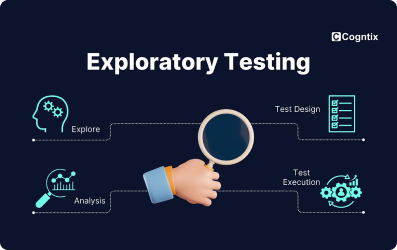When you think of exploratory testing, do you picture a tester clicking through the app or analyzing requirements? I bet most would imagine someone clicking through the app!
Both are right, but in this article, let’s dive into exploratory testing in requirement analysis. Even if you’re not a tester, this will be useful if you’re involved in requirement analysis.
Requirements can be explored during a discussion or after they’re written down. Exploring them is all about thinking deeply. In this blog, I’ll show you how to explore requirements and why it matters.
What Is Exploratory Testing?
This topic deserves its own post, but here’s a quick example to get the idea. Imagine a requirement: “As a user, I want to log in with my username and password.”
If you simply enter the credentials and click Login, you’re not exploring. But if you click Login without entering anything, you’re exploring. You might even try entering an incorrect email or password, or clicking the Login button multiple times.
Exploratory testing is about testing beyond what’s written in requirements. If you’re interested, “Explore It!” by Elisabeth Hendrickson is a great book on this topic. Now, let’s see how exploratory testing fits into requirement analysis.
Exploring Requirements During Discussions
This is the perfect time to start testing. You may not have a product yet, but you can save a lot of time and headaches by beginning here.
During requirement discussions, the goal is to define what the system should do. You’ll start with the “happy paths,” but then it’s time to think about what could go wrong.
What Can Go Wrong?
Each happy path has scenarios where things might go wrong. Take the login example, what happens if a user enters the wrong credentials? If there’s no warning, the user might get confused. Ask about these potential pitfalls.
What Should Always Work?
This is a “happy-path” question, but it helps you focus on what’s crucial. For example, in a web shop, showing correct prices is key. Talk to stakeholders about what could affect pricing accuracy.
What Should Never Happen?
Discuss what should never occur. For instance, products shouldn’t vanish from a wish list. Explore scenarios where this could happen and figure out how to handle them.
Are There Variables Affecting Other Functionalities?
This is critical to prevent defects in multiple areas. Using the web shop example again, what happens to a product if it’s removed by the seller? Will it affect the cart, product list, search, filter, payment, or bought items? Exploring these connections is vital.
Starting exploratory testing during requirement analysis can prevent many issues later in development. Doesn’t that sound ideal?
Exploratory Testing in Defined Requirements
Remember, defined requirements can change. So don’t just accept them as they are! Analyze them using the questions we’ve covered.
Ask yourself:
What can go wrong?
What should always work?
What should never happen?
Are there variables affecting other functionalities?
Does the user need the functionality as described?
Is it too complicated?
Are there scenarios not covered in the requirements?
These questions will lead to more questions, and sometimes, the requirements won’t have all the answers. Reach out to stakeholders for clarification, and don’t hesitate to share your suggestions too, as it could lead to even better solutions.
Benefits of Exploratory Testing in Requirement Analysis
So why bother with exploratory testing in requirement analysis? Because the benefits are big for both product quality and teamwork.
Benefits during requirement discussions:
Time-saving: Discussing requirements early means fewer discussions later.
Preventing bugs: You’ll catch potential issues before they become problems.
Fewer change requests: Early exploration reduces the need for changes later.
Better planning: Clear requirements lead to accurate estimates and priorities.
Improved communication: Early discussions prevent misunderstandings.
Time and money saved: All of the above ultimately save time and money.
Benefits for already defined requirements:
Better quality: discussing missed scenarios or something that can be done better than it is, and implementing it, provides better product quality.
Better UX: end-users probably won’t praise your dedication and great work, but be sure that you will prevent user complaints caused by poor user experience. Besides that, satisfied users are likely to bring to your product more users and to continue to use your product.
Satisfied clients: Clients appreciate the effort to deliver high-quality products.
Conclusion
Exploratory testing isn’t just about testing the product, it’s also about analyzing requirements. Think outside the box, ask the right questions, and you’ll see the benefits in no time!
Curious about how exploratory testing can transform your project? Contact Cogntix today to learn how our approach to requirement analysis can save you time, prevent bugs, and enhance your product’s quality.




